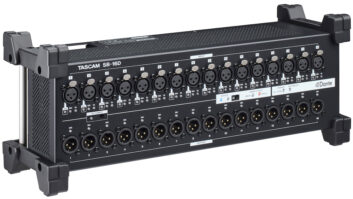TCP (Transport Control Protocol): TCP, along with IP, is half of the modular TCP/IP protocol that has made Ethernet such a success. TCP is responsible for packetizing, or breaking up, messages to send them over an uncertain pathway (the Internet) and reassembling the packets at the intended destination.
TDM (Time Domain Multiplex[ing]): A technique widely used since the 1960s, especially in circuit-switched telephony, to multiplex or interweave multiple data streams onto a single carrier channel by quickly chopping up each stream and sequentially assembling them into a composite data stream.
Telco: a telephone company, typically an ILEC.
Telecom: Telecom, short for telecommunications, is the industry that was created with, and has wrapped around, the invention of the telephone.
Telephony: all things having to do with telephones and telephone services.
Terminal: Also known as dumb terminals, they have been reborn under the new rubric of “thin client.” Whether terminal or thin client, these low-cost network nodes are basically an NIC, display and keyboard with little or no local processing capabilities. Thin clients are quite popular in corporate environments because they aren’t susceptible to viruses and other malware.
Three nines: another way of saying 99.9, usually referring to percentage (as in 99.9%). Four nines (99.99%) and five nines (99.999%) are also common terms. All are used to typically denote up-time or availability, with higher percentages representing better average reliability.
Throughput: See data rate.
TLA (Three Letter Acronym): the linguistic currency of modern business and, more specifically, modern geekdom.
TLD (Top-Level Domain): TLDs were devised to bring order to the then-new Internet. The eight original TLDs included .com, .net and .org for commercial, network services and nonprofits, respectively. In addition, there were .edu for educational institutions, with .int and .mil reserved for our military. Later, as the Web spread across the globe, countries other than the U.S. were assigned TLDs: .tv is for the tiny island of Tuvalu, .ca for Canada, .uk for the United Kingdom, .jp for Japan, .de for Germany, .no for Norway, etc. Recently, seven new TLDs have been added, including .biz, .pro and .name. TLDs are assigned and controlled by ICANN.org, the Internet Corporation for Assigned Names and Numbers.
Top down: a description of the process of developing a DAM “solution” based on an understanding of the content’s context and end-user’s needs. A top-down approach, as opposed to the bottom up method, is the information sciences’ way of solving the problem.
Topology: As it relates to networks, topology refers to the physical (topological) structure or layout of a network.
Track: In a hard disk drive, a track is the magnetic trace or path of an individual read/write head, while the actuator arm on which it is mounted is stationary.
Trailer: The opposite of a header, a trailer denotes the end of the symbol sequence that a header “starts.”
Triple DES: a triple encryption of information using the DES algorithm. Because DES encryption is fairly easy to break, three successive encodings are enough to make it reasonably secure. Triple DES has largely been replaced by AES encryption.
UDP (User Datagram Protocol): a collection of stateless, connectionless (setup-free) network, transport and session (OSI Layer 3) protocols used to implement, among other things, NFS. UDP, like TCP, is layered on top of IP; unlike TCP, it doesn’t even try to guarantee delivery.
Unicast: a type of communication between computers (hosts) on a network in which a host talks directly to another computer. Also see multicast.
Unix, UNIX: First developed by Bell Labs, Unix is a powerful, flexible, interactive operating system. Unix was the first OS written in C, a high-level language now widely used by programmers everywhere. Since it was first released in 1969, Unix has grown and evolved, often with the addition of free contributions of academic programmers. Solaris, AIX, HP-UX, Mac OS and IRIX are all Unix “distributions,” or versions, while the increasingly popular Linux is modeled after Unix. UNIX™ is a trademarked Unix distribution owned by The Open Group.
Uptime, up-time: Uptime, the opposite of downtime, refers to the amount or percentage of time that a product, system or service is operational.
URL (Universal Resource Locator): a human-readable way of referring to a network node’s IP address and associated directory and file structure. The URL (http://www.seneschal.net/index.html) “tells” a Web browser to use the HTTP protocol to open the file “index.html” at the IP address mapped to the domain “seneschal.net.” Index.html is the default file name that browsers “look for” when going to a bare domain name such as seneschal.net. So, the index.html is implied if you only enter “www.seneschal.net” into your browser’s address field.
USB (Universal Serial Bus): A standard for host-based serial data connectivity of computer peripherals over asynchronous transport. USB was developed by Intel to replace the RS-232 serial protocol and PHY.
UTP (Unshielded Twisted Pair): UTP was first popularized by telcos for use as premises wiring. Once it became ubiquitous, UTP was pressed into service to replace the more costly and unwieldy coaxial cable that was first specified for Ethernet.
Virtualization: the increasingly valuable process or packaging of abstracting the specifics of a networked environment, typically networked storage, to better administer and utilize what are usually piecemeal “islands” of network assets. Virtualization is typically performed by proprietary software packages, though vendor-agnostic products are available. Virtualization is also available as embedded features of some vendor’s SAN “intelligence” or functionality.
Virus: a self-replicating, self-executing code designed to install itself on as many hosts as possible. Viruses are usually malware, written specifically to either do harm to the host or to serve some other malicious purpose.
VoIP (Voice over IP): pronounced “voyp,” VoIP is the process of passing digitized voice traffic over the Internet as an alternative to traditional telco voice services. VoIP includes VoWLAN, or Voice over a WLAN, which includes VoWiFi, or Voice over a Wi-Fi network.
VPN (Virtual Private Network): encrypted connections between LANs, MANs or WANs that use the Internet to securely and inexpensively span long distances.
VXA: a proprietary, entry-level, linear data tape standard originally developed by Ecrix. VXA is now part of the Exabyte family of products.
W3C (World Wide Web Consortium): the World Wide Web‘s standards-setting body.
WAN (Wide Area Network): a data network that spans MANs.
Web browser: The Web browser, first created as Mosaic by Sir Tim Berners-Lee, is the principal application used to interact with the World Wide Web. Opera, Mozilla, Safari and Navigator are all examples of a browser, while Internet Explorer, the most widely used browser, is increasingly being supplanted by the open-source Firefox.
Web Services: a paradigm whereby applications and utilities such as DAM and storage are delivered — really rented — via the Internet. Current Web services usually employ SOAP messaging formed using XML. Examples of Net services are Apple’s Sherlock and Google’s Web APIs.
Wi-Fi, WiFi: Wi-Fi or Wireless Fidelity (go figure) refers to wireless networking using 802.11b protocols. Public Wi-Fi APs and services have become so well-accepted that it’s not uncommon to find McWi-Fi on the menu at urban McDonald’s.
Windows Media: an ad hoc standard created by Microsoft that provides a scalable, cross-platform framework for a wide variety of media data types.
Wireless: information transfer by means other than wires. Radio, light (typically infrared) and smoke signals are all wireless forms of communication.
Wireline: The opposite of wireless, wireline means to employ wires in a communications system.
OMas, having returned from the annual family pilgrimage to Ghost Ranch refreshed and renewed, was captivated by a recent viewing of Federico Fellini’s Nights of Cabiria. Thanks for the Fellini tip, Marty, see y’all next month!







